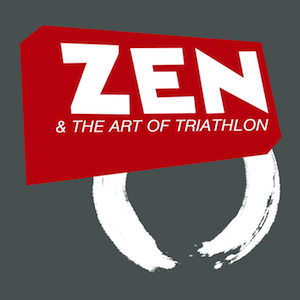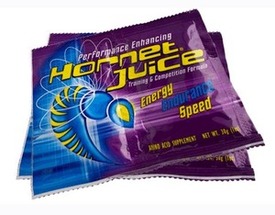Redesigned Suunto Foot Pod Review
 Monday, January 21, 2008 at 4:46PM
Monday, January 21, 2008 at 4:46PM 
I just took the newly redesigned Suunto Foot Pod for a spin. I'm digging it!
We all go crazy over GPS, but GPS has some issues.
- It doesn't work indoors and can be extremely inaccurate under dense tree cover.
- GPS isn't very accurate at the consumer grade and small size athletes like to use.
- Battery life is short.
- Sometimes signal can take a long time to aquire, or there is no signal at all. What then?
Suunto has done a great job of developing their products around a system of "pods" that allows the athlete to easily pick and choose how he/she wants to measure distance. I was let in on a little secret about GPS vs. Foot Pod by a Suunto rep. "Use the Foot Pod. It's more accurate and the battery lasts much, much longer." Now don't get me wrong. I love GPS, and there's definitely times for it, (sailing, anyone?) but a foot sensor works for 99.9% of running situations.
I have only owned one tiny Apple product in my life, the Shuffle, but I constantly rave about how Apple designed the user interface. Tiny LEDs only activate right when you turn it on, saving battery life. The thing is slim and functions as a clip, making you search for it before you realize you are even wearing it. iTunes talks with it easily, allowing you to manage it from your PC.
The new Foot Pod reminds me of the Shuffle. Being a guy, I went right past the instructions and tried to turn it on. No on switch? What gives? I started reading through the documentation and realized what was going on. Suunto had done some smart designing not only to reduce weight, but also improve battery life and make it more usable across shoe platforms. Here's the list of what I found:
- It now uses a clip instead of a rubber shoe-lace-threaded holder. You used to have to unlace your shoes to mount the holder, not anymore. Just unclip and place it on another shoe. I like that A LOT.
- You pair it with your watch for its first ever use by turning it upside down. What? I quickly realized that the engineers were using the internal sensors instead of a switch. Another weight saving idea. From then on out, just move the sensor and it turns on so your watch can sense it.
- It turns on after sensing movement. The light either blinks 3 times or 6. 3 = good to go, 6 = 5 hours or less of battery life. That's it, no more lights. Just like the Shuffle, no blinking lights during use saves battery.
- Speaking of battery, they switched out the AAA for a watch battery. The reduction in LED use and probably some other onboard stuff gets you 3 times the hours of use as well. 200 hours on one battery is great. Make sure you dispose of that old battery correctly!
- Then there is the reduction in size. I never thought the old model was huge, but hey, I'll take a smaller size. Less weight = more efficiency!
So there you have it. Suunto pulled an Apple and came out with an innovative reinvention of their old product. I love seeing this trend in the industry. Keep finding ways to make the technology disappear so we can focus on running instead of fiddling with hardware.














Reader Comments (7)
Helpful review, but I'm trying to find the answer to 2 main questions (first one is more important). Can you help? :
1. Will the foot pod only be accurate if I keep the same stride length throughout a run? (If I keep the same 'cadence' for flat/uphill/sprint/long rather than same stride length, won't the number of strides be translated into an inaccurate distance ...unless the average happens to match the surface I do the calibration on?). This wouldn't seem to be an issue for GPS pod, if signal was available, because even if it only knew I was somewhere in a 5m circle (say), it could accurately track the speed of that circle's movement
2. I see they both measure distance and time (so speed), and the GPS pod doesn't provide a track, and the foot pod doesn't measure 'cadence'. So do they both display the exact same data on the watch (and if downloaded), or is foot pod better, or have more display options?
Very good questions!
1. I've used both the footpod and GPS extensively and I've found the footpod to be much more usable. First off, I no longer have to sit around waiting for signal, which sometimes never becomes available. Secondly, GPS can be more inaccurate than the footpod when you include interference and dropped signal, which happens a bunch. Thirdly, you can't use GPS indoors or under thick tree cover. Fourth, the battery life on GPS sucks.
Basically, GPS is cool, very cool, and definitely has it's uses, but if you're going to be running/biking with little prep time or under tree canopy or indoors, or for a long time, it's hugely more convenient to have a tiny footpod correctly calibrated on on your foot.
I was going to use GPS on the Ragnar, but it was taking a little while to find signal, then the belt clip broke, and I just said screw it, footpod... GO! Bam, done deal.
2. Calibration is necessary. And you can preclude any inaccuracies by running 1 mile at one speed, writing down that calibration factor, and then running a different speed and writing that calibration factor down for posterity. You can change it right in the watch if needed. Ragnar was a mix of running, run walking, and sprinting like hell and it was right on, no issues.
3. I think you have your issues backwards. GPS Pod can provide a track and footpod can produce cadence. I personally don't use either of those for training. I look at effort level, speed, distance, and HR. I'm in the map making industry by profession, but I find that spending time plotting your run on a map is of limited utility, at least for training purposes. You may want to do that from time to time, but I only need to do that enough where I can just draw it by hand (mouse) for somebody.
Hmm. Thanks ...that's just raised more q's :) [I've had a Suunto T3 with no pods, for 10months]
1. Yes, I'd got that impression. If GPS had instant startup, perfect reliability and infinite battery life then it could take the place of the foot and bike pods. I'm leaning towards a Suunto foot pod for my T3 at the moment (rather than GPS pod, or Garmin/Polar/Suunto T6), but I'm trying to understand if it'll be 'near enough' (particularly for interval sessions) or if there's some recognition that 2 paces may be different lengths during a session (without me having to recalibrate in advance)
2. I didn't quite follow : If I run 200 (short) paces uphill, followed by 200 (long) paces on the flat, will the Suunto foot pod think those 2 distances are the same?
Do you mean that you changed pace and had to change an entry on the watch at the same time? ...Because I've read that the Polar foot pod can sense (or interpolate) a change in stride length and cadence, but not that the Suunto can. (Reviews have said various foot pods and GPS pods give similar distances, but a long-distance average doesn't answer my q)
3. Interesting that you say that about track and cadence. I've read/heard that neither is produced (not that they couldn't be) and couldn't tell from the manuals. But I wasn't saying they're useful to me, just saying that these are NOT differentiating features (foot v's GPS), so are there any (beyond startup/reliability and battery life) ...like speed data from foot pod can be displayed in lots of different units on the watch, but from GPS pod only in one (or vice versa)? ...Some great piece of usability that I'd only find by using it
Have been listening to your podcasts today, after writing the initial comment, so definitely interested in what your experiences have been
Now you're getting pretty deep! I'm under the impression that the accelerometer in the foot pod can sense how long your stride is. Calibration is just fine tuning it. Never tried changing it mid-workout.
You can 100% most definitely change the units readout on all the pods. I often change my gps one from mph to min/miles. Changed my bike pod from mph to kmph just the other day for a few minutes and back again.
I've taken the data once and converted it to a gps track. I'd talk to Suunto and see what kind of mapping options are available nowdays. Stuff is always changing.
If that's the case, then it sounds like my decision _is_ just based on the limitations of the GPS pod (startup/reliability and battery life). Though I'll be training for triathlons too, I think I'll get the Suunto foot pod to start with. Thanks for your help
-------------------------------------------------------------------
This is all that the foot pod manual says on the matter :
"NOTE: If you are training at different paces, you will reach the best accuracy
byusing different calibration factors for slow and fast running. For marathons,
we recommend calibrating the Foot POD at your target marathon pace."
...And the GPS pod manual :
"You can transfer the speed and distance data recorded by your wrist unit to your computer
to be viewed in the Suunto Training Manager PC Software (Suunto t6) or Suunto Training
Manager Lite (Suunto t3 and t4, optional with PC POD)."
Many blogs have stopped using trackbacks because dealing with spam became too burdensome. Some weblog software programs, such as Wordpress,
memorized